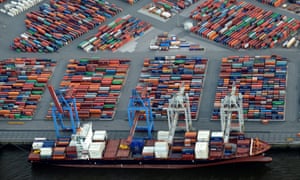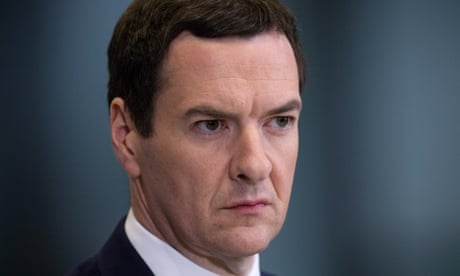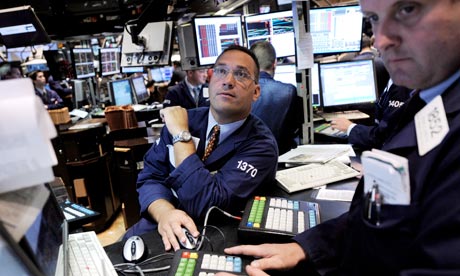G Sampath in The Hindu
By shifting the burden of poverty alleviation from the state onto the poor themselves, behavioural economists are ignoring the structural causes of poverty. They are also erasing the behaviour of the owners of capital from the poverty debate
The World Bank’s World Development Report (WDR) 2014 was about ‘Risk and Opportunity’. The 2013 WDR is simply named ‘Jobs’. The 2012 WDR is titled ‘Gender Equality and Development’.
Other WDR themes in the recent past include ‘Agriculture for Development’ (2008), ‘Equity and Development’ (2006), and ‘Building Institutions for Markets’ (2002). They all have an overt economic dimension. Naturally — for it’s a bank, after all. But the World Bank’s 2015 WDR is titled ‘Mind, Society and Behaviour’. That’s right. Now, what would a bank — or, if you prefer, a multilateral development finance institution — want with mind, society and behaviour?
There is a two-word answer to this question: behavioural economics. In its 2015 WDR,
the World Bank makes a strong pitch to governments for applying behavioural economics to development policy.
As the report notes in its opening chapter, “The analytical foundations of public policy have traditionally come from standard economic theory.” Standard economic theory assumes that individuals are rational economic agents acting in their best self-interest.
But in the real world, people often behave irrationally, and not always in their own best economic interest. For instance, they might splurge when they could save, or give excessive weight to the immediate present as opposed to the distant future.
Is poverty a mindset?
Behavioural economics uses insights from psychology, anthropology, sociology and the cognitive sciences to come up with more realistic models of how people think and make decisions. Where these decisions tend to be flawed from an economic point of view, governments can intervene with policies aimed at ‘nudging’ the targeted citizens towards the right decision.
All this seems fairly unobjectionable. However, things change when behavioural economists focus their attention exclusively on the behaviour of the poor. Till date, there is no evidence that monitoring and ‘nudging’ the behaviour of the world’s poor is a better route to alleviate poverty than, say, monitoring and ‘nudging’ the behaviour of the financial elite. Surely the latter cannot be deemed as altogether rational economic agents — not after the 2008 crisis?
The second assumption of behavioural economics — presented as a new ‘finding’ based on research, and regurgitated wholesale by the 2015 WDR — is that the poor are less intelligent than the rich. It is an obnoxious idea, and also politically incorrect. Of course, this is not stated in as many words.
The correct way to say it, then, is to state that “the context of poverty” depletes a person’s “bandwidth” — the mental resources necessary to think properly — as a result of which he or she is, well, a poor decision-maker, especially compared to those who are not in “the context of poverty”, such as the rich and the middle classes.
Lest anyone misunderstand, the authors of the report hasten to add that it’s not just the poor but anyone — even the wealthy — who, when placed in a “context” of poverty, would make wrong decisions. (For the record, it must be noted that the poor are — all else being equal — more likely to be in “the context of poverty” than the rich.)
To support these assumptions, a number of research studies are trotted out. One such study, mentioned in the report, was conducted on Indian sugarcane farmers, who typically receive their income once a year, at the time of harvest.
It was found that the farmers’ IQ was ten points lower before they received their harvest income than afterward (when they were flush with cash and were comparatively richer). So ideally, they should not take major financial decisions before harvest time. Such an insight into how poverty affects behaviour could have policy implications for, say, cash transfers — which can be timed, or made conditional, on displaying certain behaviours pre-determined by the state as ‘rational’.
The report states in all earnestness that poverty “shapes mindsets”. From here, it is a hop, skip, and jump to holding, as the leading behavioural economists of the day do, that the poor are poor because their poverty prevents them from thinking and acting in ways that can take them out of poverty.
Thus the focus as well as the burden/responsibility of poverty-alleviation would shift from the state — from macroeconomic policy, from having to provide employment, health and education — to changing the behaviour of the poor. The structural causes of poverty — rising inequality and unemployment — as well as the behaviour of the owners of capital are evicted from the poverty debate, and no longer need be the focus of public policy.
Behavioural economics
In this context, it might be pertinent to note that the rise of behavioural economics as a discipline parallels the rise of neoliberalism, starting from the 1980s and rapidly gaining respectability and funding from the 1990s. All the leading lights of the field such as Daniel Kahneman, Amos Tversky, Robert Shiller, Senthil Mullainathan, Richard Thaler and Cass Sunstein made their mark in this period, and are heavily referenced in this report.
A fundamental principle of neoliberal thought is to find market-led solutions to socio-economic problems. No matter that poverty is often a symptom of market failure. Free market ideologues attribute poverty and all socio-economic ills to market distortions caused by state interference. The economists who get to shape the World Bank’s WDRs are chosen for their ability to toe this line.
On the odd occasion that the lead author of a WDR made a bid for intellectual independence, he had to make an untimely exit. For the 2000-01 WDR, titled ‘Attacking Poverty’, the original draft prepared by the distinguished development economist Ravi Kanbur — incidentally brought in by Joseph Stiglitz — spoke of the need to build effective safety nets for the poor before the introduction of free market reforms.
Both Mr. Kanbur and Mr. Stiglitz were out of the World Bank before the report was. As the economist Robert Wade points out in an essay on this episode, titled ‘Showdown at the World Bank’, the version eventually published no longer spoke of creating prior safety nets for the poor. It instead called for putting them in place “simultaneously with labour-shedding reforms”.
The point of this detour into WDR history is that — to borrow the jargon of behavioural economics — the overarching necessity to conform to free market ideology may be said to impose a ‘cognitive tax’ on World Bank economists, as a result of which their ‘mental models’ do not permit the ‘framing’ of poverty in ways that may contradict this ideology.
The Keynesian formula of safety nets from the free market may well be permanently banished from the policy agenda. But that still leaves unresolved the problem of how to manage the social and political consequences of the widening income gap between the 1 per cent and the 99 per cent. This is critical because growing discontent could lead to political instability. After all, in order for markets to function, and commodities to flow freely and predictably, the excluded masses must be taught to behave. This is where behavioural economics comes in.
Action and behaviour
In order to change the behaviour of the poor, one must first understand it. It is this understanding that behavioural economics promises to codify into knowledge. To be sure, the WDR readily acknowledges that even the rich, the economists, and the World Bank staff themselves, might be subject to cognitive biases.
But nowhere in its 230-odd pages does the report present an instance, or even a hypothetical example, of a behavioural economics-inspired policy intervention whose target is, say, a class of billionaire investors, despite the fact that today, compared to the poor, this is a group that wields far more influence, per capita, on a nation’s economic destiny. Changing their behaviour — for instance, manipulating them into deploying their billions on productive rather than speculative investments — could generate more beneficial, and more effective, outcomes than micro-manipulating the financial decisions of a poor peasant.
A major confusion that dogs this report is the conflation of ‘action’ and ‘behaviour’. The term ‘behaviour’ comes with the baggage of the empirical sciences. It is typically used with reference to animals and objects under scientific observation. Behaviours can be studied for patterns. To the extent that human beings are also animals, they can also be said to exhibit behaviours. But what makes them human is precisely their capacity to transcend behaviour patterns — in other words, to act.
The political theorist Hannah Arendt, in The Human Condition, speaks of three kinds of human activity: labour, work and action. Of the three, what distinguishes action is its political nature. When behaviourist economics speaks of poverty as a “cognitive tax”, it writes ‘action’ — the political agency of the poor — out of the equation.
As democratic nation states reorient themselves to being accountable to global financial markets, non-democratic bodies such as the World Trade Organization, and trade agreements such as General Agreement on Tariffs and Trade and Trade in Services Agreement , they will necessarily become less responsive to the aspirations of their own citizens. With overt repression not always the most felicitous or cost-effective policy option, it has become imperative to find ways and means to ideologically tame the economically excluded. Hence the new focus on the minds and behaviour of the poor.
Behavioural economics, insofar as it is concerned with the behaviour of people in poverty — and it is this stream which dominates this year’s WDR — is simply the latest addition to the neo-liberal toolkit of political management.



